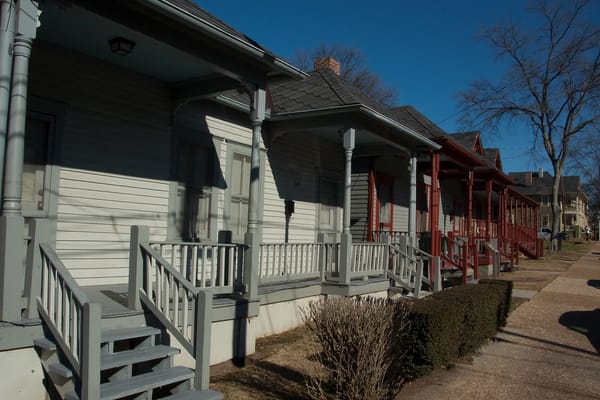How James Marion Sims Became the Father of Modern Gynecology by Experimenting on Slaves

In the 1890s, our society put colonialist abuse on a pedestal when the monument honoring James Marion Sims was erected in Central Park in New York City. James Marion Sims was once applauded for his achievements in gynecology. He perfected surgeries that treated women with vesicovaginal fistulas, ruptures of the wall separating the bladder from the vagina that was caused by complications in labor. He also developed techniques and tools that changed gynecology forever, such as the speculum, which he initially crafted out of bent spoons. His developments improved the lives of many women throughout history and are even used today. Unfortunately, Sims pursued those developments without any scruples over the consent of the patients he experimented on.
Sims performed his most important experimental surgeries on slave women who didn’t have the capacity to consent. Part of the reason why these women were accessible to him in the first place is that the nature of their ailment significantly reduced their quality of life. Historical accounts describe women living with the condition in a piteous fashion:
The urine passing into the vagina as soon as it is secreted, inflames and excoriates its mucous lining… causing great suffering. It trickles constantly down her thighs, irritates the integument with its acrid qualities, keeps her clothing constantly soaked, and exhales without cessation its peculiar odour… In cases where the sloughing has been extensive, and the loss of substance of the tissues great, and where neither palliative nor curable means have availed for the relief of the sufferer, she has been compelled to sit constantly on a chair, or stool, with a hole in the seat, through which the urine descends into a vessel beneath.
Because Sims’ slave patients were in an unbearable amount of pain and probably were willing to undergo anything to stop it, some historians believe that Sims had received consent from his slave patients. Sims himself claims that the women who he performed on “had ‘clamored’ for the operations to relieve their discomfort.” L. Lewis Wall, a medical doctor from the Department of Obstetrics and Gynecology at Washington University School of Medicine defends Marion Sims’ medical ethics, stating that “it is not surprising that these patients, even though they were enslaved, would have jumped at the opportunity to have surgery” as well as reminding readers that Sims “lived and worked in a slaveholding society” and that we can only evaluate him from the “distant vantage point in a society that has moved in a different direction.” Wall says that modern activists and writers who are bringing to light the historical injustice that his slave patients experienced “have [unfairly] denounced Sims with the kind of righteous indignation that is usually heard only from pulpits.” While it’s true that Sims’ work will continue to improve the lives of countless women, it doesn’t require us to pretend that his legacy is morally pure. A detailed examination of what is known about how he handled patient consent sheds important light on the extent of that impurity.
Sims performed the majority of his procedures on three slaves, in particular, Betsey, Anarcha, and Lucy, making a deal with their owners that he would fix their fistulas “in exchange for unlimited access to his patients’ bodies.” These women were preferred test subjects because they were more likely to have difficult childbirths and suffer from vesicovaginal fistulas due to limited medical care. From the owner’s perspective, a slave suffering from a vesicovaginal fistula isn’t going to be as efficient as a worker, facilitating access to such patients. Lastly, there would be fewer repercussions if things went wrong while experimenting on a black slave woman than on a free white one. Unsurprisingly, white women with vesicovaginal fistulas weren’t experimented on until after Sims could reliably perform the surgery on slaves with success. The disenfranchised social position of the slave is precisely what made the arrangement so desirable to all enfranchised parties.
Many of the Sims’ satements that are used as evidence that the patients consented also show how he may have been able to bypass consent. For example:
For this purpose [therapeutic surgical experimentation] I was fortunate in having three young healthy colored girls given to me by their owners in Alabama, I agreeing to perform no operation without the full consent of the patients, and never to perform any that would, in my judgment, [jeopardize] life, or produce greater mischief on the injured organs—the owners agreeing to let me keep them (at my own expense) till I was thoroughly convinced whether the affection could be cured or not.
In addition to his own records prioritizing the consent of the owners rather than patients, we know that Sims legally was not obligated to ask for consent from the slaves for the surgery. By law, “slaves were the property of others and Sims could not have legally operated on them without the consent on their owners.” All questions of consent lead back to the slave owners’ decisions rather than those of the slaves.
Moreover, even if Marion Sims intentionally sought out the consent of his patients, even though he didn’t legally need to, it doesn’t really mean that patients actually elected to have these surgeries. Just as prisoners today are not considered capable of consenting to have sexual relationships with their jailers, we should not pretend that slaves were in a better position. Slaves weren’t given the freedom to be stakeholders in their own medical care, or to risk the dangers involved in going against their owner’s wishes.
Considering the invasiveness of the procedures, it’s difficult to imagine that someone could willingly endure as much as some of his patients did. In 1849, after four years of experimentation, “on Anarcha’s thirtieth surgery, Sims successfully closed the fistula and Anarcha made a complete recovery” and replicated the procedure on Betsey and Lucy after. It’s frightening to see the way these women were reduced to pawns in Marion Sims’ game of scientific discovery. While it shouldn’t surprise us that the road to scientific discoveries is paved with the blood of the socially disenfranchised, we should not shrink from taking a critical look at how even very valuable discoveries were made by those in a position of power.
Because Sims had success, it is tempting to frame his actions purely in terms of their benefits to humanity. This blinkered view is hard to maintain when we turn our attention to his medical experimentation outside of his work in gynecology. Before and after he worked with these particular women, he “tested surgical treatments on enslaved black children in an effort to treat trismus nascentium (neonatal tetanus),” which resulted in little to no success. He would also “operate on African-American children using a shoemaker’s tool to pry their bones apart and loosen their skulls” because he believed their skulls were growing too quickly around their brains. Unlike his work in gynecology, these experiments did far more harm than good and further demonstrate that he perceived slaves to be objects and treated them accordingly.
While these procedures sound cruel and barbaric to us today, a commonly held belief in medicine at this time was that blacks experienced less pain than whites and were therefore the preferred subjects in experiments. This very convenient assumption may have been formally dropped today, but medical professionals still tend to take the physical pain of racial minorities less seriously than their white counterparts. One study from 2019 showed that “black patients were 40% less likely to receive medication to ease acute pain and Hispanic patients were 25% less likely” than their white counterparts. The racist beliefs and stereotypes that empowered Sims and others to devalue black lives in search of scientific advancements still exist today and continue to perpetuate the medical mistreatment of racial minorities.
By acknowledging the history of abuse that people have faced at the hands of people in power, we can see how history informs the injustices that marginalized groups face. We no longer put James Marion Sims on a pedestal. In January 2018, New York City removed the statue of J. Marion Sims from a pedestal in Central Park after a mayoral commission examining controversial monuments in the city deemed the statue unfit for its location.
Featured image is Statue of J. Marion Sims on Fifth Avenue, on the wall of Central Park, by Jim Henderson




